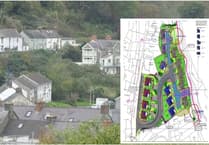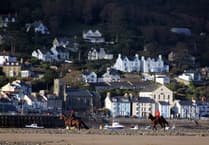This week’s Cambrian News carries a report in census data that ought to be required reading for anyone living in mid Wales — moreso if you can’t afford to buy a home in the community where you’ve grown up, where you children might have gone to school, or when services are being pared back with each passing fiscal year.
The data reveals the depth of a housing crisis in our region being exacerbated by second and holiday homes, with numbers growing amid concerns that local residents and young people continue to be priced out of buying a house.
The data was collected in March 2021 and it shows that the number of people using a second address as a holiday home in Gwynedd and Ceredigion has jumped significantly in the last 10 years.
While in 2011 63.9 out of 1,000 residents were holiday home owners in Gwynedd, for 2021 that number jumped to 79 – the highest rise in the UK.
In Ceredigion the number rose from 29.9 in 2011 to 39.4 in 2021.
The Office for National Statistics report that “as a proportion of the local housing supply South Hams on the coast of Devon and Gwynedd in north Wales had the highest proportions of holiday homes”, with some areas of Gwynedd having “more than one in 10 addresses being used as holiday homes”.
“And when adjusting for the local population, Gwynedd and the Isle of Anglesey in north Wales saw the highest proportions of holiday home users travelling to their areas.”
Should we be surprised? Hardly. Those of us who live in hollowed out villages during the winter months, know the cold, hard facts of second homes.
As this newspaper has commented before, our local authorities have been given a full range of measures to ensure that those with second homes pay higher taxes to compensate for the social effects of fewer schools, empty villages and higher house prices. They should use them fully.
Sadly, funds from the central exchequer are largely determined by those census forms filled out in the dark of winter.
How much more would our county councils receive if those forms were filled out in July or August when our communities heave with part-time homeowners enjoying their annual Welsh breaks.


